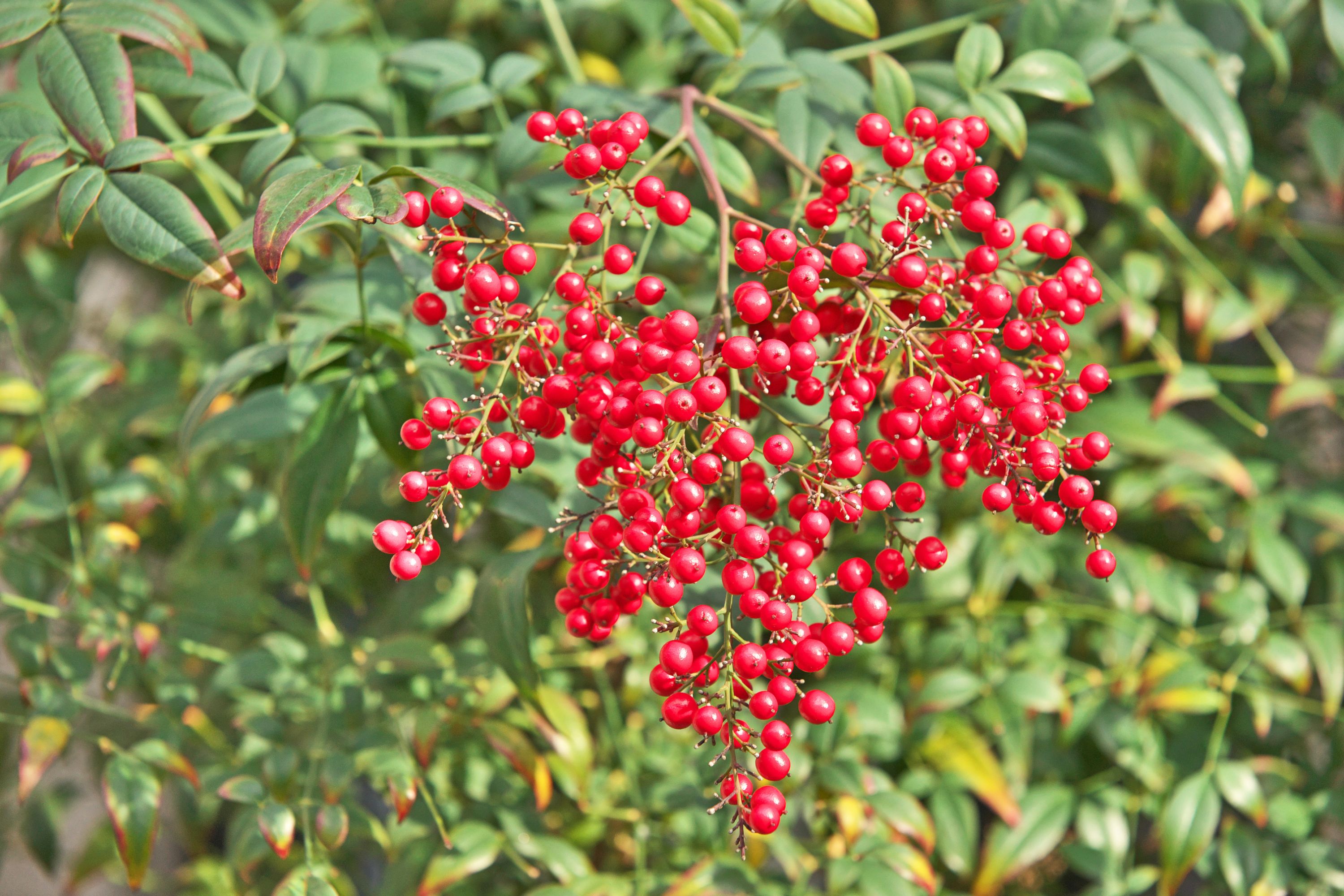Heavenly bamboo
(Nandina domestica)

Description
Nandina domestica is a popular ornamental plant native to eastern Asia, including Japan, China, and the Himalayas. This plant, also known as heavenly bamboo, is grown for its attractive foliage, delicate flowers, and striking berries. In this article, we will explore the history, morphology, cultivation, and maintenance of Nandina domestica. History and Taxonomy: The genus Nandina belongs to the family Berberidaceae and comprises only one species, Nandina domestica. This plant was first described by the German botanist Carl Thunberg in 1794. The genus name Nandina comes from the Japanese word nanten, which means "southern sky." The species name domestica means "of or relating to the house," referring to the plant's use as an ornamental plant. Morphology: Nandina domestica is a multi-stemmed, upright shrub that can reach up to 8 feet tall and 6 feet wide. The plant's leaves are evergreen, divided into many small, lance-shaped leaflets. The leaves are glossy, with a bright green color that turns red or purple in the fall. In the late spring and early summer, Nandina domestica produces small, white flowers that are arranged in large, pyramidal clusters at the end of the branches. The flowers are followed by showy, bright red berries that persist into the winter. Cultivation: Nandina domestica is a versatile and easy-to-grow plant that thrives in a wide range of soil types, from sandy to clay. The plant prefers a slightly acidic to neutral soil pH and requires good drainage. It is hardy in USDA zones 6-9, meaning it can tolerate temperatures down to -10°F. Nandina domestica prefers full sun to partial shade but can tolerate full shade in some climates. In hotter areas, the plant will appreciate some afternoon shade to prevent leaf scorch. Regular watering is essential for young plants, but once established, they can tolerate drought. Propagation: Nandina domestica can be propagated by seed, stem cuttings, or layering. Seed propagation is relatively easy, but the resulting plants may not be true to the parent plant's characteristics. Stem cuttings taken in the summer or fall root quickly in a well-drained potting mix. Layering is a method where a stem is bent down to the ground and covered with soil. The covered section will develop roots, and a new plant can be separated from the parent plant. Layering is an excellent propagation method for Nandina domestica because the plants can be slow to establish from seed or cuttings. Maintenance: Nandina domestica is a low-maintenance plant that requires little attention once established. Pruning is the main task, and it is necessary to maintain the plant's shape and remove any dead or damaged wood. Pruning should be done in late winter or early spring before the new growth starts. Nandina domestica can be susceptible to pests and diseases, including aphids, spider mites, and scale insects. Regular inspection and treatment with insecticidal soap or horticultural oil can control these problems. Powdery mildew, leaf spot, and root rot are fungal diseases that can affect Nandina domestica, but these are rarely severe. Uses: Nandina domestica is a popular landscape plant used in mass plantings, mixed borders, and foundation plantings. It is also suitable for container gardening and makes an attractive focal point or accent plant in a garden. The plant's bright red berries are a significant attraction, and they can be used in cut flower arrangements or as a natural holiday decoration.
Taxonomic tree:







